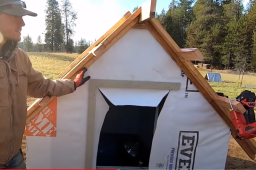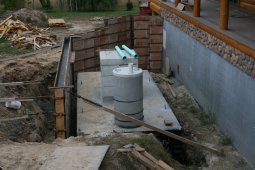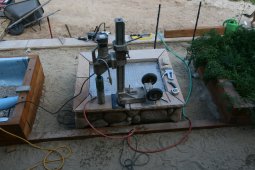Does anyone have an opinion (preferably based on experience or first hand knowledge) about the practicality/safety of using an underground septic tank as an accessible vault (root cellar) to store a large battery bank to provide a temperature stabilized environment rather than trying to insulate/heat them?
My plan is to burry 10 feet down, and use two risers to provide ladder access hatch and ventilation shafts.
My plan is to burry 10 feet down, and use two risers to provide ladder access hatch and ventilation shafts.
- Will it work?
- Will it be dry enough for batteries
- Will it be safe to enter to service/check on batteries?
- Am I overlooking anything?






